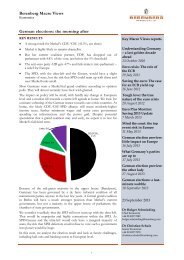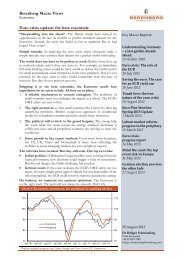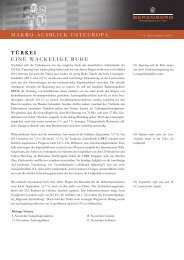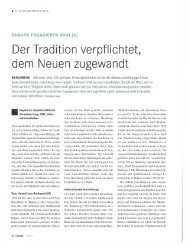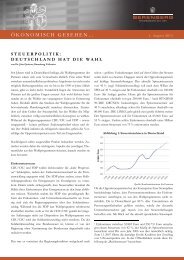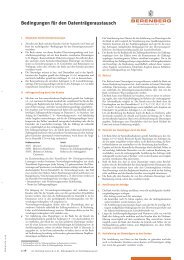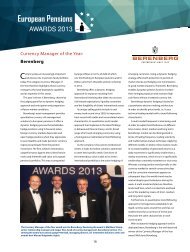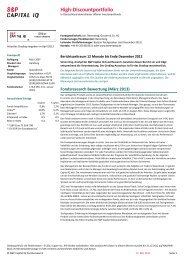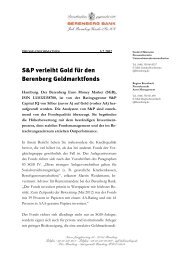Semiconductor Equipment - Berenberg Bank
Semiconductor Equipment - Berenberg Bank
Semiconductor Equipment - Berenberg Bank
You also want an ePaper? Increase the reach of your titles
YUMPU automatically turns print PDFs into web optimized ePapers that Google loves.
<strong>Semiconductor</strong> <strong>Equipment</strong><br />
Technology Hardware<br />
Figure 18: DRAM capex/revenue versus bit growth trend<br />
DRAM<br />
100%<br />
80%<br />
60%<br />
40%<br />
20%<br />
0%<br />
2003 2004 2005 2006 2007 2008 2009 2010 2011 2012<br />
DRAM Capex/revenue<br />
Bit growth<br />
Source: Gartner data<br />
Historically, DRAM capital intensity was positively correlated to bit growth (see<br />
Figure 18). As discussed above, we expect DRAM bit growth to grow at a<br />
moderate 30% rate compared with its historical level of 70%. The spending pattern<br />
(capex/sales) of the DRAM industry is therefore likely to undergo structural<br />
change from the previous 40-60% level to 19-25%.<br />
We estimate that DRAM capex will remain flat or slightly down in 2013 even if the<br />
ASP improves, as DRAM-makers are likely to spend conservatively for the time<br />
being. We may start to see a small capex uptick in 2014/2015 because: 1) DRAMmakers<br />
may begin to spend more as they see sustainable profitability; and 2) most<br />
DRAM-makers plan to start or expand their 2Ynm (25/24/23nm) output in 2014,<br />
followed by 2Znm production in 2015. We could even see substantially higher<br />
capex growth if DRAM-makers start to upgrade current fab to facilitate EUV tools<br />
in 2014/2015, as the EUV tools are much bigger and heavier than previous<br />
lithography tools.<br />
Foundry and logic – the main spenders keep spending<br />
Foundry and logic capex grew at c22% from 2007-2012, versus total capex which<br />
was down by c1% during the same period. The strong capex growth was linked to<br />
the consumer electronics boom that began in 2009/2010.<br />
We expect the consumer electronic market to maintain solid growth over the<br />
next few years, driven by the intensified competition between vendors and form<br />
factor innovations. Logic players such as Intel and Samsung, are exposed to the<br />
trend because they manufacture the chips they use in own devices, while TSMC,<br />
the Samsung foundry, Globalfoundries and other foundries are exposed because<br />
they receive manufacturing orders from fabless players such as Apple, Qualcomm,<br />
Nvidia, Broadcom and Mediatek (see Figures 19 and 20).<br />
18


